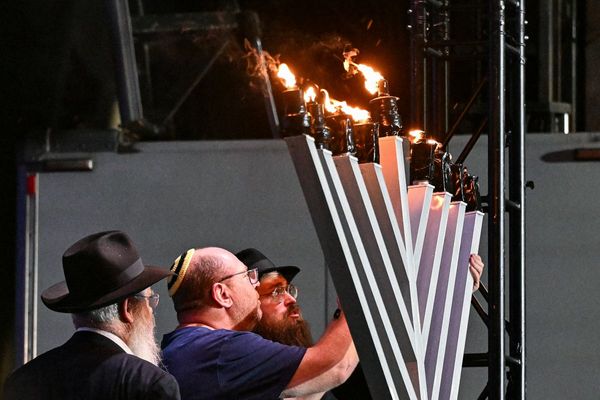
When the newly-crowned Queen Camilla accompanied her husband King Charles III from Westminster Abbey on Saturday, she capped off an extraordinary transition that saw her emerge from being named and shamed as the third party in Charles and Princess Diana’s doomed marriage to being respectfully addressed as Her Majesty.
As a royal evolution, Camilla’s has been decades in the making. The relationship between the couple dates back to the summer of 1971 when they first met, long before Charles married Lady Diana Spencer in 1981.
But Camilla Shand, who had previously dated Andrew Parker Bowles, the man she would eventually marry, was not looked upon favourably by Buckingham Palace.
Her lack of a title and her previous liaisons excluded her, in the eyes of the Palace’s movers and shakers, from any future regal role.
But while the young Ms Shand might not have inherited a title, she nevertheless moved in all the right circles, and two years later, when she married Parker Bowles, her social network kept her firmly within the realm of Prince Charles, who in 1974 became godfather to the Parker Bowles’ son, Tom.
In 1982 Charles became a father himself, when he and Diana welcomed son William the year after their wedding (Prince Harry arrived two years later).
With both parties married with children, the youthful relationship between Camilla and Charles seemed well and truly buried.

But a bombshell book about Diana written by Andrew Morton in 1992 revealed the depth of the princess’s unhappiness with her marriage and her husband’s secretly resumed liaison with Camilla.
The following year produced more ignominy for Charles and Camilla with the publication of a transcript of a shared phone call, dating back to 1989, during which the prince fantasised about living “inside [her] trousers”.
Diana would later claim in an interview on the BBC’s Panorama that “there were three of us in this marriage, so it was a bit crowded”.
By 1996 both Charles and Camilla had divorced their partners, freeing them up for a future relationship. But the tragic death of Diana a year later forced the couple to press pause on plans to go public with their love.
Amid the overwhelming outpouring of public grief for the lost princess, the way forward for Charles and Camilla looked murky.
Furthermore, a BBC poll taken just weeks before Diana’s death had already found that two-thirds of the 100,000 British participants were against Charles assuming the crown if he remarried.
Camilla’s image reversal
Any happily-ever-after for the couple appeared unlikely. But the combination of wound-healing time and a major public relations push to massage Camilla’s image instigated a reversal of opinion — by 2004 more Brits supported the marriage than opposed it.
The transition from unaccepted to tolerated firmed with the legitimisation of the couple’s relationship when they married in 2005.
It had taken years, but Camilla finally cemented her place within the royal family, winning over one of her harshest critics, the Queen, who had once referred to her future-daughter-in-law as “that wicked woman”.
In her twilight years, the Queen further paved the way for Camilla’s acceptance by announcing her “sincere wish” that her daughter-in-law be known as Queen Consort when Charles was crowned.
Having witnessed Camilla’s increasing involvement in royal duties and with an understanding of the consort role through the prolific work of Prince Philip, Elizabeth softened her view of Camilla.

The move was, according to Tina Brown, author of the 2022 book The Palace Papers: Inside the House of Windsor — The Truth and the Turmoil, a form of estate planning.
“She did that as saying ‘Charles, let me take this off the table as a controversy when you take over. I’ll announce her to be Queen because once it has my blessing you know you’re not going to see much protest about that’,” Brown told CBC’s Andrew Chang.
After years in the sin bin, Camilla earned her place in the main game — taking inspiration from her consort predecessors, the hard-working Prince Philip and the charismatic Queen Mother. As Brown observes: “She has done every royal duty she’s been required to do with grace and charm.”







